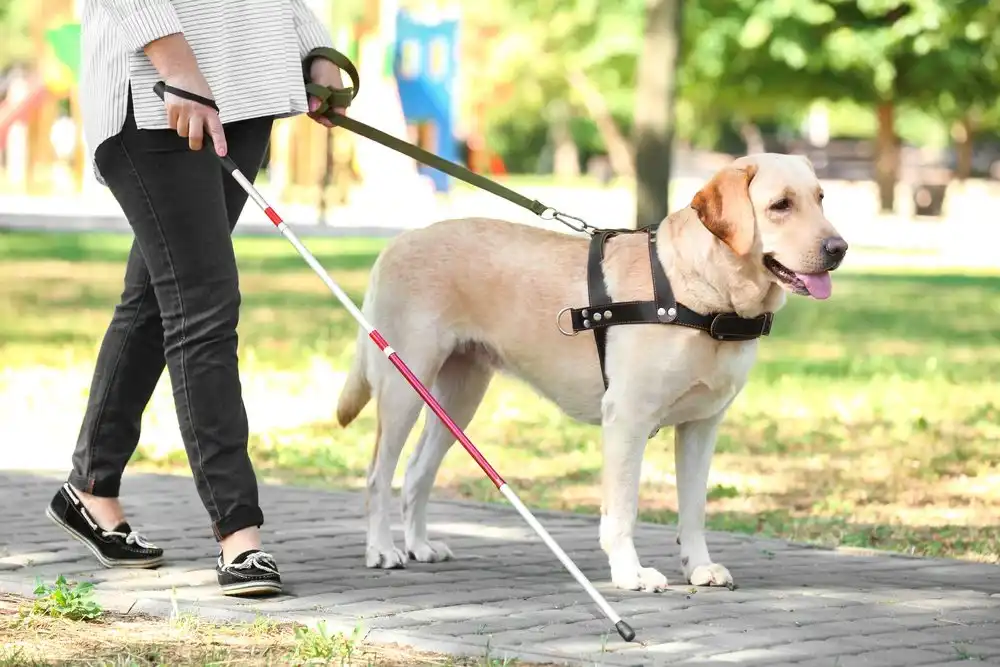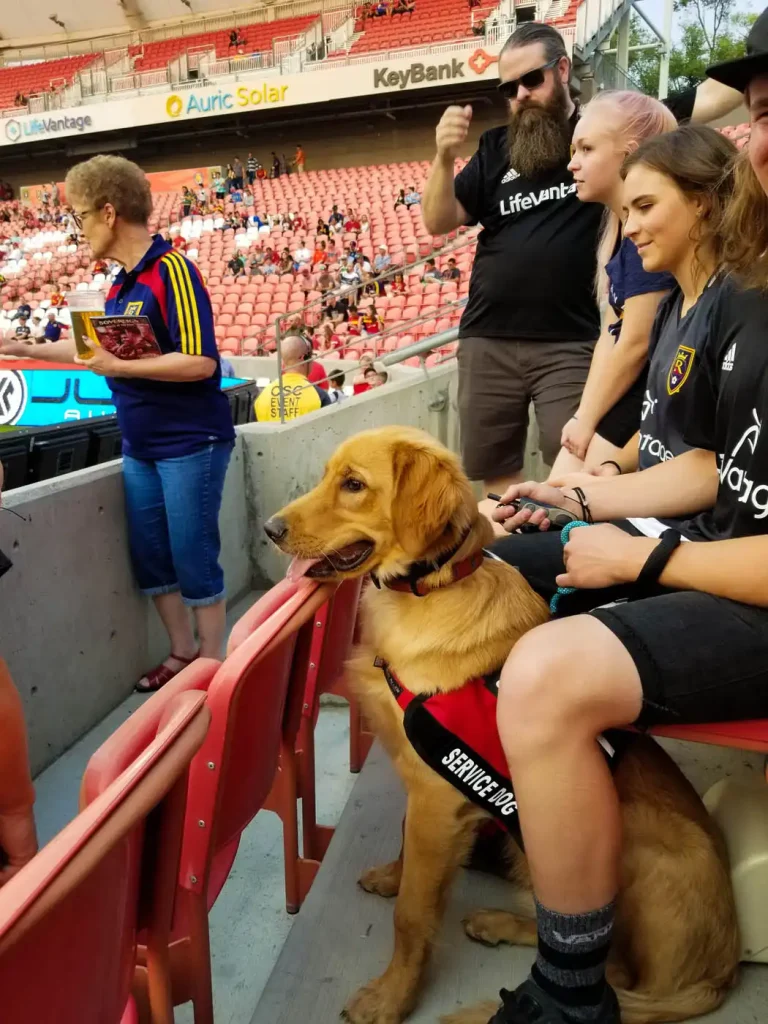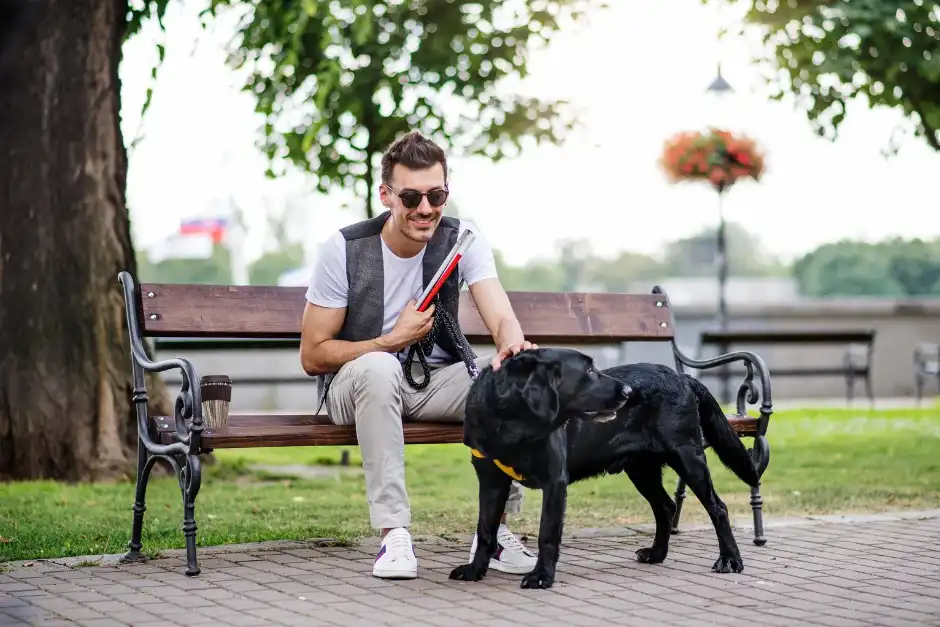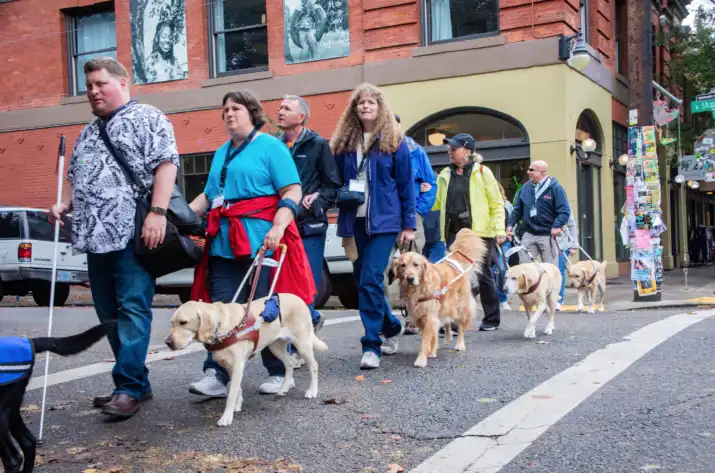Guide dogs are special companions trained to assist people who are blind or have low vision, helping them navigate the world safely and independently. The journey to becoming a guide dog is extensive, involving careful breeding, socialisation, and specialised training. Let’s explore this remarkable process step by step.

1. Breeding and Early Life
The journey begins with the selection of parent dogs known for their good health and gentle temperaments. Breeding programmes aim to produce puppies suitable for guide work. Once born, these puppies spend their first weeks in a nurturing environment, receiving early socialisation to various sights, sounds, and experiences. This early exposure helps them become well-adjusted and confident.

2. Puppy Raising
At around eight weeks old, the puppies are placed with volunteer puppy raisers. These dedicated individuals or families care for the puppies until they are about 12 to 14 months old. During this time, the puppies learn basic obedience commands such as “sit,” “stay,” and “come.” They are also introduced to various environments like shops, public transport, and busy streets to ensure they are comfortable in different settings. This stage is crucial for building the puppies’ confidence and adaptability.

3. Formal Training
After their time with puppy raisers, the young dogs return to the training centre for formal guide dog training, which typically lasts several months. Professional guide dog mobility instructors teach the dogs advanced skills, including:

- Guiding: Leading a person in a straight line unless directed otherwise, stopping for all changes in elevation such as curbs and stairs.

- Obstacle Avoidance: Navigating around obstacles in their path, both at ground level and overhead.

- Intelligent Disobedience: Understanding when to disobey a command if following it would lead to danger, such as stopping at a busy road even if instructed to proceed.

- Directional Commands: Responding to commands like “left,” “right,” and “forward.”

Positive reinforcement techniques, such as clicker training, are commonly used to encourage desired behaviours. The training environments become progressively more challenging, starting from quiet areas and moving to busier locations as the dogs’ skills develop.

4. Matching with a Partner
Once the dogs have successfully completed their formal training, the next step is to match them with individuals who are blind or have low vision. This matching process is personalised, taking into account the person’s specific needs, lifestyle, and preferences, as well as the dog’s temperament and working style. The goal is to create a harmonious partnership where both the person and the dog can work confidently together.

5. Team Training
After being matched, the new guide dog team undergoes joint training. This training usually takes place over a few weeks and focuses on building a strong bond between the person and the dog. They practice working together in various environments, learning to communicate effectively and trust each other. The training covers daily routines, navigation routes, and specific challenges the person might face.

6. Ongoing Support
Even after the initial training is complete, guide dog organisations provide ongoing support to the teams. This support includes follow-up visits, additional training if needed, and resources to ensure the partnership remains successful. Guide dogs typically work with their partners for several years before retiring, at which point they may become beloved pets or be rehomed, depending on the circumstances.

The journey from a playful puppy to a fully trained guide dog is a testament to the dedication of breeders, trainers, volunteers, and the dogs themselves. Through this comprehensive process, guide dogs become invaluable companions, providing independence and confidence to those who need them.

For more interesting articles, please visit www.kidzherald.com





